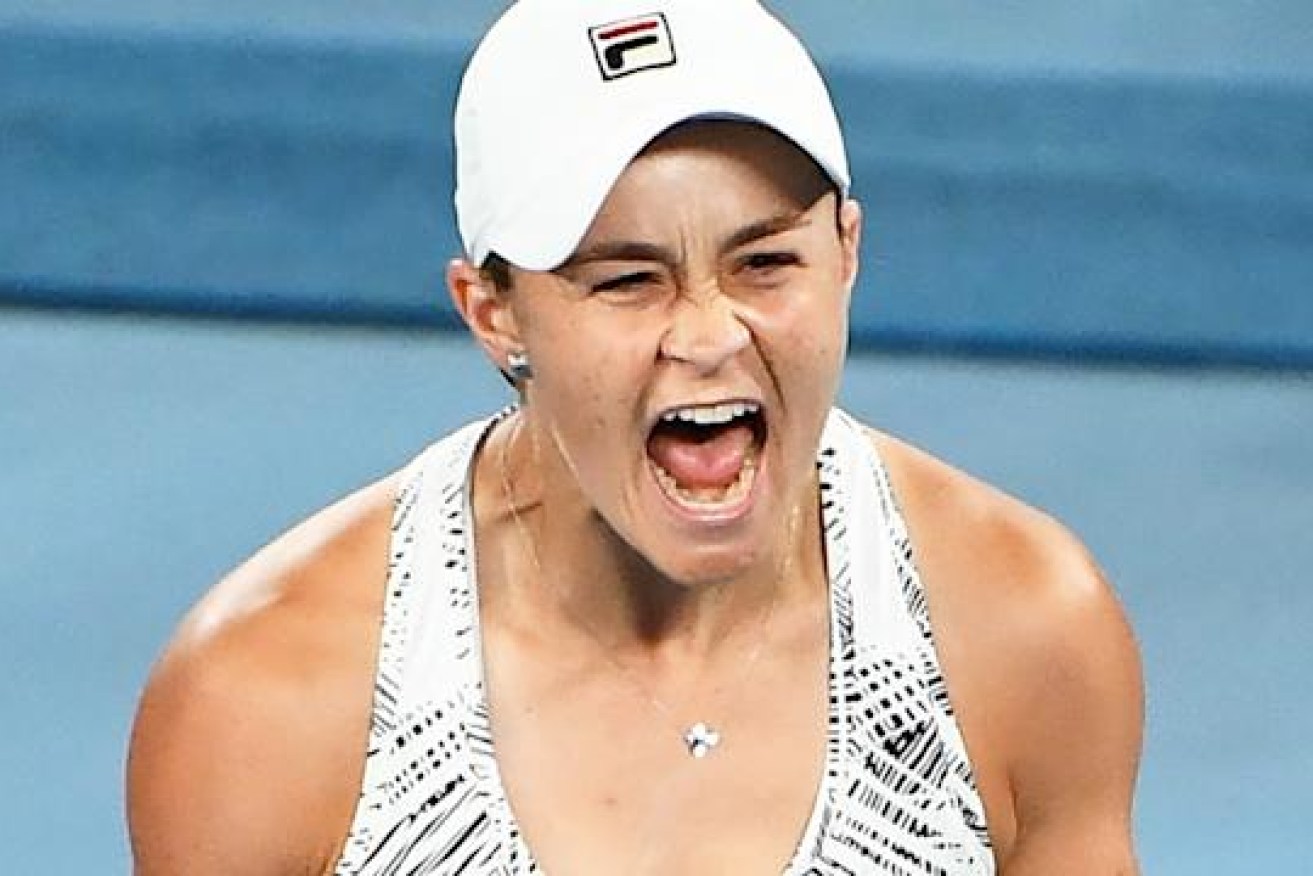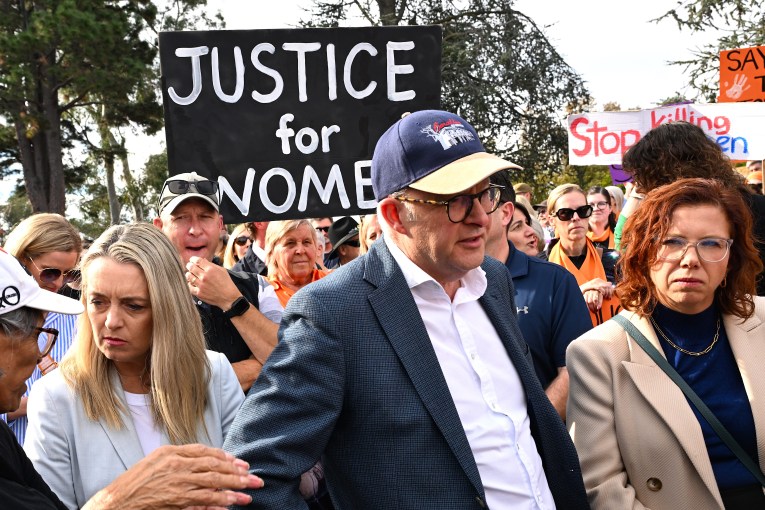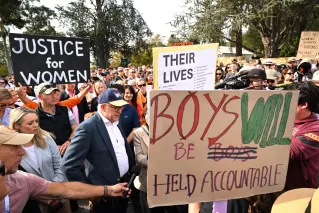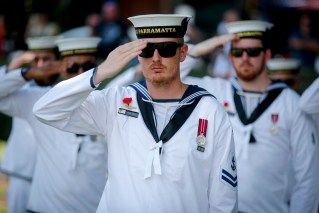Listen up lads: Things you should know before tackling women’s sport
Last week columnist Jim Tucker lauded the growing profile of women’s sport in Australia and its new-found credibility in the eyes of mainstream media. Today, Katrina Beikoff offers a view from the other side of the fence


Ash Barty celebrates her Australian Open triumph. (AAP Photo).
Oh no. Did I really read a column in this publication saying that women’s sport in this country is finally maturing?
Was the argument really being made that women’s sport has now grown to such a state that the media can finally objectively analyse female on-field, on-court, on-pitch performances?
The media couldn’t do that before because they had to go soft? They had to promote the sport?
What rubbish.
It’s also a nonsense argument that it is women’s sport itself that is only now mature enough to take a bit of criticism. The suggestion that we are finally at a point where women’s sport has actually met watchable standards is offensive, as is throwing out there what a relief it is that the women involved are able to be grown-up about the way it is covered.
That sports lovers are tuning into the women’s Ashes, Matildas, or Ash Barty’s brilliant Australian Open victory is great.
It’s certainly not because the media are doing a nice little promo favour by showcasing the girls.
These sports events are a spectacle. They are top notch. They are captivating displays of sporting prowess and every bit as mesmerising as the men’s version of the sports.
Sports dominated by women, such as netball, have always been worthy of better coverage. It is an elite sport that happens to be played by women. And Australia’s clashes with New Zealand hands down match any international rivalry in any sport going.
Sports that women participate in at rates that are not wildly lower than males, such as, say, basketball or hockey, swimming, diving, beach volleyball, golf and tennis, have also always been open to incisive analysis and masterful critique of female performances.
How good is kayaker Jess Fox, who became the first person in her sport to win two medals at the same Olympics? Australian audiences would have learned more about Olympic kayaking through coverage and critiques of Fox’s bronze and gold medal performances at the Tokyo Olympics than we have through any other athlete’s efforts in the discipline.
And, of course, Emma McKeon, who became Australia’s most successful Olympian in history with 11 medals, after her feats in Tokyo. She joins a brilliant line up of female champions of the Australian Dolphins team.
There’s little we haven’t discussed about her tapers, splits, and explosive PBs, or Ariarne Titmus’ incredible endurance to reel in champions with her signature final lap surge. There’s huge viewer appetite for the performances of these athletes and detailed analysis of their skill and talent.
The women’s field hockey Hockeyroos are superstars, and their game is dissected in a fashion the best in the business deserves.
Lauren Jackson is an Australian basketball legend and the Opals have proven their metal against the best in the world. It was nice to see Patty Mills and the Boomers also do well at the Tokyo Olympics.
Yet, unfortunately, paternalistic attitudes remain about women’s sport. They are also occasionally given oxygen.
It is fortunate that there are many more female voices in the ranks of coaching, commentating, reporting, and as sports executives in Australia.
An enormous amount of dedicated work and agitating have helped Australian sports reach this stage.
The battle has been hard to shift the entrenched focus on male sport and male sports idols and those voices advocating for women’s sport to receive equal attention and finance deserve medals.
Yet, in Australia, and internationally, men are still more likely to feature in the sports coverage – both as players and commentators – which feeds into the biased trope that sport is a male activity.
Back in 2017, the Intergenerational Review of Australian Sport, found women’s sport made up 7 per cent of sports coverage. It also found that in Australia, around 8 per cent of sponsorship was directed to women’s sport.
Clearly there’s evidence behind the claims that media coverage can have a direct effect on a sport’s ability to attract commercial sponsorship, and that a lack of coverage can have significant impact on the sustainability of female athletes, sports, and competitions.
Perhaps this is one of the points that supporters of women’s sport have long been making, even if it was misunderstood by some media types as a request to be a cheerleader.
Then there’s the issue of how women’s sport has been covered.
The focus and tone of coverage of female athletes and sports is often quite different to that of male sport. Just recall Carlton star forward Tayla Harris’ famous kick and the picture that launched a troll frenzy.
In women’s sports coverage there still remains a more pronounced focus on physical appearance, femininity and sexuality alongside athletic ability. Coverage is also often littered with infantilising language and attractive posed or smiling celebration images rather than action shots.
As one of a very light dusting of female sports writers in the early 2000s, I have personal experience of the precious response by some rugby league clubs and players when they saw coverage of their sport more as criticism than cheerleading.
Rarely a week went by when my reporting wasn’t undermined as authored by a woman who’d never played rugby league. Or, if a negative report was published, I was berated about how the information I revealed could possibly be supporting the game.
That I hadn’t played the game was a fair call. I never had.
Then again, I’m pretty sure most of my male colleagues, who are great reporters, hadn’t played either. If they had, they would barely have borne a tackle outside of the junior ranks.
And, as for the players and clubs: if you don’t fancy coverage that is sometimes negative, be better.
There’s now a host of women covering sports, including all football codes. Sport in Australia is better for these women’s voices, women’s involvement, and showcasing of women’s performance.
Maybe it’s not that the girls are finally getting it right. Maybe it’s that the dinosaurs have finally got a wakeup call.
Katrina Beikoff is a Walkley Award-winning sports writer, who has covered Olympic and Commonwealth Games, world championships and other elite sporting events and was a specialist writer on doping in sports. As an author, her sports book, Rugby League: A Modern History 1966-2015, was published in 2015. She writes for InQueensland.












